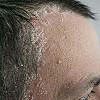Understanding Botox Injections
Botox injections
With the recent nod of approval from the Food and Drug Administration (FDA), the popularity of Botox injections has surged. Spas, shopping malls, walk-in clinics and even parties advertise the availability of this age-defying treatment. Even before FDA approval, the use of Botox was on the rise, increasing 61% between 2000 and 2001, according to the American Society of Plastic Surgeons.
Botox, the trade name for botulinum toxin type A, is used to lessen the telltale signs of aging by softening frown lines on the forehead and brow, crow's feet at the corners of the eye, and other wrinkles. But what is this toxin, how does it work, and who should be administering the procedure?
Botulinum toxin type A is one of several proteins secreted by the bacterium Clostridium botulinum. These proteins are neurotoxins; they attack nerve cells and paralyze the affected muscles. Ingestion of botulinum toxins causes the infamous food poisoning botulism. But when the purified form of botulinum toxin type A is injected into the muscles below the skin in very low doses, the result is a reduction in wrinkling.
As we age, our skin becomes less elastic and wrinkles remain even when the muscles controlling the skin are relaxed. Botulinum toxin lessens wrinkles by attaching itself to nerve endings in the muscle and preventing the release of the neurotransmitter acetylcholine. This blocks the nerve signals transmitted from the brain to the muscles and paralyzes or weakens the muscle controlling the wrinkled skin. The result is the smoothing out of the skin from disuse — if it can't move, it can't wrinkle.
Botox injections are done in a quick and easy procedure lasting less than 30 minutes. The toxin takes effect within a week. The results are temporary, however, so retreatment is necessary within three to six months. Botox may be used in conjunction with or as an alternative to other facial skin rejuvenation procedures such as chemical peels or laser skin resurfacing. When performed by an experienced physician, the most common adverse side effects of the procedure include headache, respiratory infection, flu syndrome, and nausea.
With the potential results and relative ease, it is easy to forget Botox is a prescription drug and not just an injection. However, the results of the procedure largely depend on the injector's knowledge of the complex muscular anatomy of the face, the effects of the drug, and the principles of aesthetics. Each face must be treated differently. An inexperienced or careless injector may introduce the toxin into parts of the face that result in droopy eyelids or brows. Injections in several parts of the face at the same time can result in excessive paralysis, leading to a "frozen" or unexpressive look that may take a few months to disappear.
For the best results, anyone considering this procedure should find a dermatologist or dermatologic surgeon with training and experience in the technique. The physician should also spend adequate time with the patient discussing the desired results and the patient's medical history. A patient must understand the risks, benefits, alternatives, and reasoning for the procedure. The injections should be performed in an appropriate setting such as a medical office with medical personnel and equipment ready to deal with potential complications.
The injections are on the pricey side, though, costing an average of $400.
December 2002 Update
Disclaimer:
As a service to our readers, Harvard Health Publishing provides access to our library of archived content. Please note the date of last review or update on all articles.
No content on this site, regardless of date, should ever be used as a substitute for direct medical advice from your doctor or other qualified clinician.












